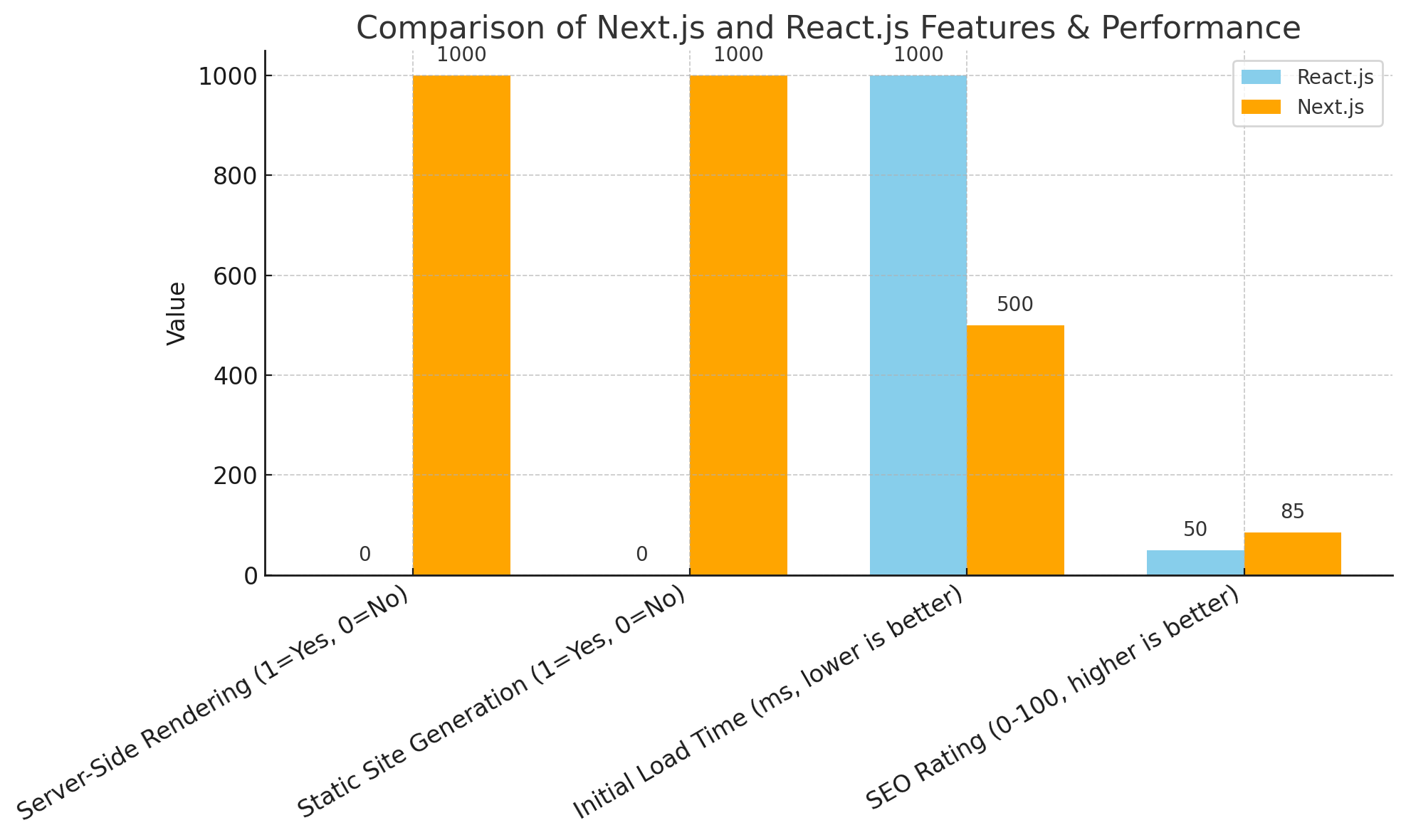React.js and Next.js
When it comes to building modern web applications, React.js and Next.js are two of the most popular technologies developers turn to. React.js is a JavaScript library focused on building user interfaces, while Next.js is a framework built on top of React that extends its capabilities with server-side rendering, static site generation, and more. In this post, we’ll explore both React.js and Next.js, highlight their features, and explain how they work together in modern web development.
What is React.js?
React.js is a JavaScript library developed by Facebook (Meta) for building user interfaces, especially for single-page applications (SPAs). It manages the view layer of applications, allowing developers to create reusable UI components and update them efficiently as data changes. Since Next.js is built on top of React, everything you learn about React’s component model, state management, and rendering logic also applies when working with Next.js.
Key Features of React
- Component-based architecture: Build complex UIs from smaller, reusable components.
- Virtual DOM: Update only the parts of the actual DOM that change, improving performance.
- Declarative syntax: Describe the UI for each state, letting React handle updates efficiently.
- Unidirectional data flow: Keep data flows predictable and easier to debug.
When to Use React
- You want to build interactive UIs that dynamically update based on user actions and data changes.
- You prefer having control over routing and state management, choosing libraries and patterns that fit your needs.
- You are building single-page applications (SPAs) where the initial load happens once, and navigation is handled on the client side.
What is Next.js?
Next.js is a React-based framework that adds powerful features. It offers server-side rendering (SSR), static site generation (SSG), file-based routing, and seamless integration with backend APIs. By using Next.js, you can build performant, SEO-friendly applications without having to manually configure complex tooling.
Key Features of Next.js
- Server-side rendering (SSR): Pre-render pages on the server, improving SEO and initial load times.
- Static site generation (SSG): Pre-build pages as static files, ensuring fast, reliable performance.
- API routes: Create backend endpoints in the same codebase as your frontend.
- File-based routing: Automatically generate routes based on files in the pages directory.
- Automatic code splitting: Load only the necessary code for each page, improving performance.
- Built-in CSS and Sass support: Easily style your application without extra configuration.
When to Use Next.js
- You need server-side rendering (SSR) for better SEO or dynamically generated pages.
- You want static site generation (SSG) for content that doesn’t change frequently, ensuring fast load times.
- You prefer file-based routing, reducing the need for extra routing libraries and configurations.
- You want a full-stack approach, where frontend and backend logic can coexist in one project.
Why Use Next.js?
Improved SEO
- Server-side rendering (SSR) and static site generation (SSG) ensure search engines can easily crawl and index your pages.
Better Performance
- Automatic code splitting and pre-rendering keep load times low, providing users a fast and responsive experience.
File-Based Routing
- No extra routing libraries needed; simply place files in the pages directory and let Next.js handle the rest.
Full-Stack Development
- API routes in Next.js let you implement backend functions directly in your app, simplifying your stack.
Flexible Rendering Options
- Static Site Generation (SSG) for pages that rarely change.
- Server-Side Rendering (SSR) for pages needing fresh data on each request.
- Client-Side Rendering (CSR) for interactive features that rely on client-side logic.
Overall Comparison
For our usecase Next.js provides best outcome in every aspect compared to vanilla React.js.

Companies Using Next.js
- TikTok: Utilizes SSR to improve SEO and overall site performance.
- Nike: Employs Next.js for its eCommerce platforms, boosting load times and conversions.
- Netflix: Efficiently handles content delivery and enhances user satisfaction.
- Twitch: Enhances performance and interactivity for its user interface.
- Hulu: Delivers a fast and smooth user experience for streaming content.
Conclusion
React.js provides a solid foundation for building interactive and responsive user interfaces. By adding Next.js to the mix, you gain powerful features like server-side rendering, static site generation, and integrated routing, all of which streamline development and improve your application’s performance, SEO, and user experience.
Whether you’re creating a personal blog, a large-scale eCommerce platform, or a complex enterprise solution, combining React.js and Next.js gives you a robust, modern toolkit to build high-quality web applications.